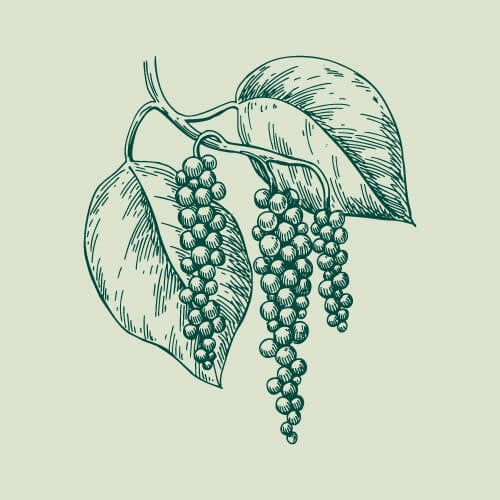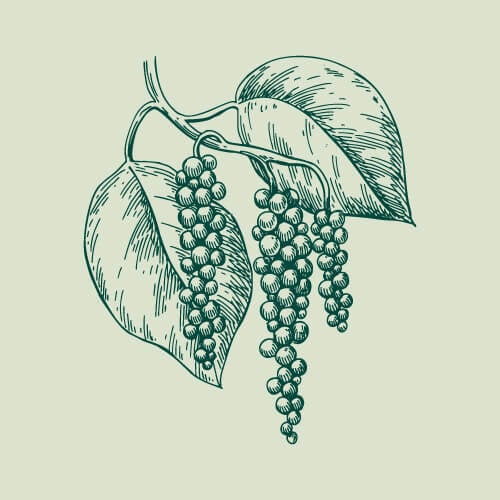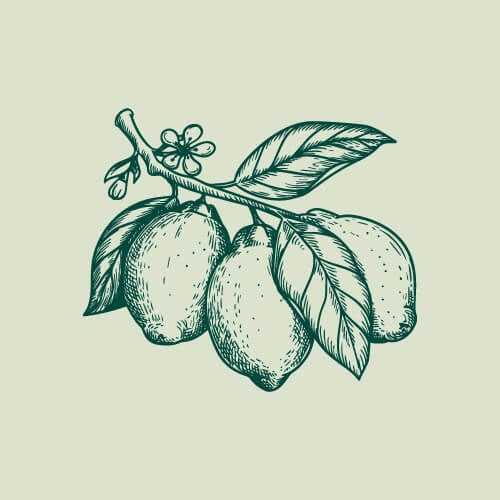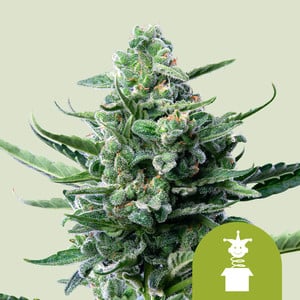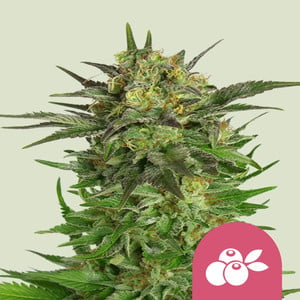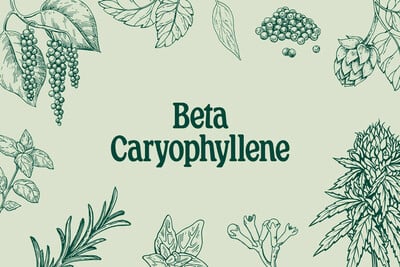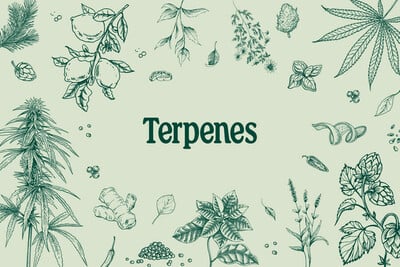.

Terpinolene: Get Acquainted With This Enigmatic Terpene
As a minor terpene, terpinolene only occurs in small concentrations in weed flowers. The vast majority of weed users don't even know this chemical exists. However, under the surface, this terpene contributes distinct flavours and aromas to select strains and also influences their effects. Learn all about this mysterious molecule below.
Contents:
Terpinolene. Chances are you’ve never heard of this terpene before. Compared to the likes of myrcene and pinene, terpinolene occurs in cannabis flowers in small concentrations. However, it has a big impact on their aromas, flavours, and even their effects. Discover everything you need to know about this enigmatic terpene below.

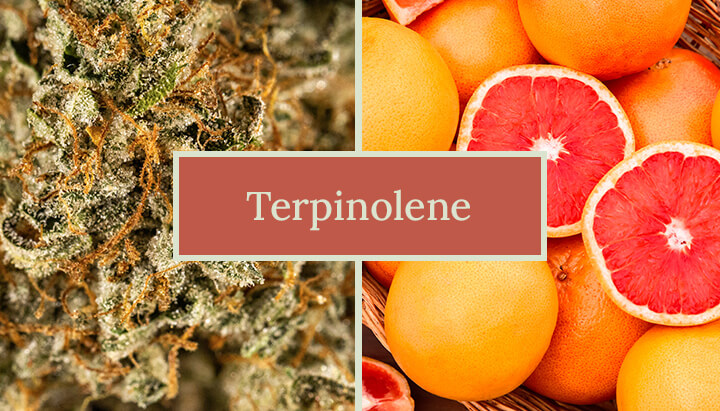
Chemistry of the Terpinolene Terpene
Not long ago, cannabinoids such as THC and CBD were the superstars of the cannabis world. Now, however, terpenes have become a vital part of the conversation. Terpenes are the volatile molecules chiefly responsible for the unique flavours and aromas of each marijuana strain. On top of this, emerging research suggests that some of them synergise with cannabinoids to dictate the effects of each variety. While THC and CBD form the core of the cannabis experience, terpenes are like the guiding hand that determines the unique effects of your favourite cultivars.
While the most abundant terpenes in cannabis, such as beta-caryophyllene, myrcene, and pinene, have received most of the attention, minor terpenes are starting to earn more recognition as well. Among them, terpinolene stands out as particularly intriguing, for a multitude of reasons. Before we dive into this molecule’s flavour, aroma, and effects, let’s quickly explore its chemistry.
The chemical formula of terpinolene is C₁₀H₁₆. As a monoterpene, terpinolene consists of two isoprene units. Each of these components features five carbon atoms and forms head-to-tail connections to create larger molecules. Terpinolene shares a close connection with another monoterpene named terpinene, with the former being one of the four isomers of the latter. As an isomer, terpinolene, also known as δ-terpinene, features the same atoms as terpinene but in a different arrangement.
Like other terpenes, terpinolene isn’t unique to cannabis. This aromatic molecule also contributes to the distinct aromas and flavours of other plants including cumin, parsnip, rosemary, sage, lilac, nutmeg, and tea tree.
Aroma and Flavour of Terpinolene
Cannabis flowers contain numerous terpenes in varying concentrations, resulting in unique olfactory and taste experiences. While the terpinolene terpene only shows up in low concentrations in most strains, it still contributes noticeable notes to the mix. Overall, the aroma and flavour of terpinolene is best described in a single word: refreshing. Above all else, the molecule carries a citrusy taste reminiscent of oranges and grapefruit. Subtle, lingering notes of sweetness and pine are also detectable and add depth to the olfactory experience.
Effects Associated With Terpinolene in Cannabis
Terpinolene exhibits interesting effects in both the cannabis plant and in humans. In the case of the former, plants invest their resources into the biosynthesis of terpinolene to increase the odds of survival and reproduction. This pungent molecule has the ability to ward off pests and harmful pathogens, all while attracting pollinator species that help a genetic line to continue.
In humans, terpinolene is believed to contribute an overall relaxing effect; the molecule shows up in many strains known for their soothing influence. Generally, strains containing notable amounts of terpinolene help to slow down the mind and ease physical tension.
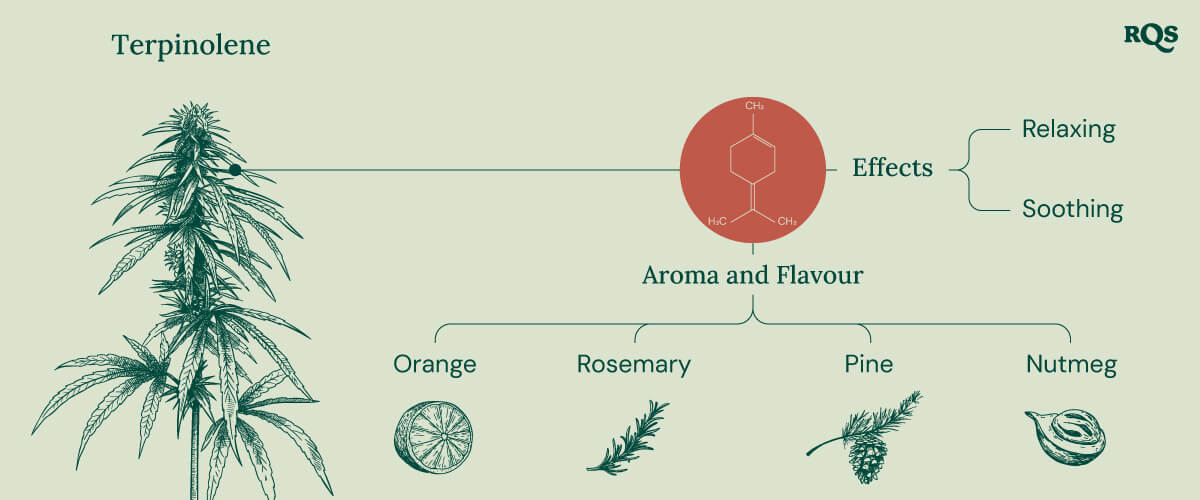
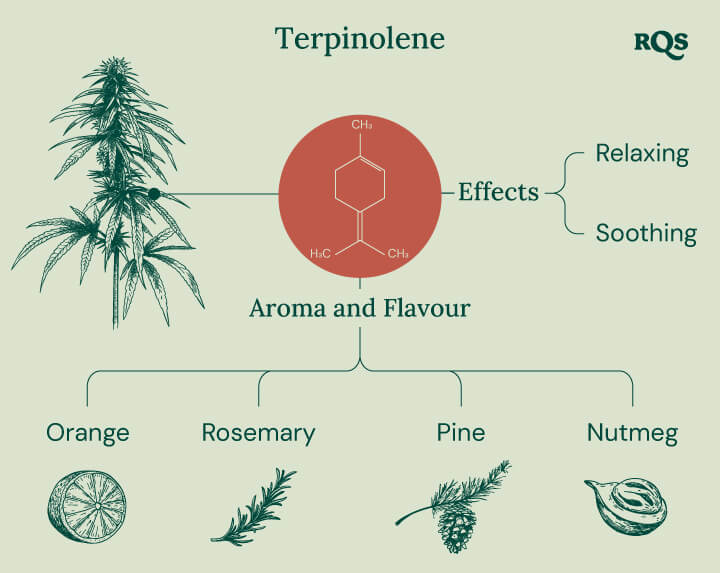
Terpinolene: A Look at the Research
Many modern drugs are derived, or were formerly derived, from plants. Aspirin was originally derived from willow bark, morphine and codeine from opium poppy, and the cancer drug paclitaxel from the Pacific yew tree. The process of drug discovery often starts out with investigating plants for promising compounds—and researchers are carrying out studies on terpinolene for this purpose. Currently, no human trials exist to delineate the physiological effects of this terpene, and even animal studies are scarce. However, early cell studies offer clues regarding the role terpinolene could play in the field of therapeutics in the future. Let’s take a look at the current research.
-
Inflammation
Inflammation has become a buzzword in health-conscious circles. While this physiological response plays a key role in defending the body against infections and healing it from injuries, chronic inflammation caused by variables such as diet and body composition is tied to a host of diseases[1], including cancer and diabetes. Current treatments for chronic inflammation include non-steroidal anti-inflammatory drugs (NSAIDs), corticosteroids, and lifestyle modifications. While effective for many people, researchers are working hard to identify new compounds to help in the fight, and some have turned their attention to terpinolene, among other terpenes.
A 2023 study[2] tested terpinolene in a mouse model of inflammation. They administered the molecule topically in varying doses as high as 200 mg/kg and looked for improvements in mouse tissues. However, they didn’t uncover how exactly the terpene could work, concluding that “...the molecular mechanisms underlying this pharmacological observation need to be confirmed by further research”.
Another study[3] tested terpinolene in a rat model of inflammation, motivated by the side effects of common NSAIDS, such as gastrointestinal lesions. They applied the terpene alongside the FDA-approved drug diclofenac and looked for synergistic action between the two compounds, measuring inflammatory biomarkers such as neutrophil, macrophage, and lymphocyte levels.
-
Oxidative Stress
Free radicals are compounds produced by the body that can cause excessive oxidative stress when unchecked. Under normal circumstances, oxidative stress plays a role in cell signalling, and free radicals are a byproduct of normal oxygen metabolism and energy production. Thankfully, the body produces a suite of antioxidant compounds that help to combat free radicals before they cause significant damage. However, a persistent imbalance between our endogenous antioxidants and free radicals can lead to cell and tissue damage as well as chronic diseases such as cancer and neurodegenerative conditions. For this reason, researchers are keen to discover and implement antioxidants found in nature.
A 2013 study[4] tested terpinolene for potential antioxidant and anticancer effects by applying the terpene to rat brain cells, specifically neurons and neuroblastoma cells. After administering several different treatment doses, they observed the total antioxidant capacity (TAC) and total oxidant status (TOS) of treated cells. The research concluded that “Future studies, especially on animal models, should further elucidate its possible use in the biotherapy of cancer”.
-
Wound Healing
Upon being wounded, the human body mounts a complex repair effort. Blood vessels constrict to reduce blood flow, immune cells launch an inflammatory cascade to clean up the area, and fibroblasts eventually start producing collagen and other extracellular matrix components to produce a scar. However, things don’t always pan out seamlessly. Several factors, including infections, poor oxygenation, excessive inflammation, and mechanical stress can disrupt the normal wound-healing process. Thankfully, researchers have developed several growth factor-based therapies and drugs that help to optimise wound healing and prevent complications. Some of them have even investigated terpinolene as a potential wound-healing aid.
A 2019 study[5] administered terpinolene and α-phellandrene to cell lines and looked for improvements in repair and inflammation. They monitored both the proliferation and migrations of fibroblasts—cells that lay down new collagen—using scratch assays. Likewise, they used cell-based assays to assess the effects of both terpenes on several inflammatory biomarkers, including nitric oxide and tumour necrosis factor-alpha.
-
Sleep
Sleep plays a crucial role in maintaining overall health and well-being. Physically, it cleans the brain, reduces the risk of cardiovascular disease, and strengthens the immune system. Psychologically, it improves concentration, enhances memory, and stabilises mood. However, research suggests that up to two-thirds[6] of adults occasionally experience insomnia symptoms and struggle to sleep. In an effort to potentially help people sleep better in the future, some researchers have taken to examining the effects of terpinolene on sleep.
A 2011 study[7] administered terpinolene and other terpenes extracted from the Microtoena patchouli plant to mice. They looked at the impact of terpinolene on the excitatory effects of caffeine and also measured its influence on sleeping induced by the sleeping drug pentobarbital.
-
Antibacterial & Antifungal
The advent of antibiotics and antifungal medicines has drastically improved the outcomes of microbial infections. However, as microbes continue to develop resistance to conventional medicines, researchers are looking elsewhere for solutions.
A multitude of studies have examined terpinolene for potential antimicrobial properties. A 2024 study[8] looked at the interaction of terpinolene, linalool, thymol, and other terpenes and substances against a mix of infectious bacteria, including Staphylococcus aureus. The researchers examined the virulence factors of the microbes included in the study to see if they hindered pathogen proliferation.
A 2022 study[9] tested terpinolene as a potential enhancer for the ultrasonic disinfections of multi-drug-resistant bacteria in hospital wastewater. In examining the role of terpinolene as a potential natural biocide, they looked at its effects on species including Citrobacter freundii and Klebsiella pneumonia.
Another 2022 study[10] investigated the terpinolene-rich essential oils of Cymbopogon citratus and Cymbopogon proximus for signs of antifungal activity. More specifically, they tested the oils for their inhibitory effects on Candida species of fungi that underpin common infections in humans.
Terpinolene: Overlooked, Understudied, But Full of Promise
Despite occurring in small concentrations in certain strains, terpinolene plays an important role in their aromas, flavours, and even effects. While studies are seriously lacking, terpinolene could indeed ascend the rungs of popularity in the near future as more findings come to the surface. This, in turn, will likely motivate breeders to develop high-terpinolene strains, allowing weed users to experience this underrated terpene in all its glory.
Cannabis Strains High in Terpinolene
You don’t have to wait for terpinolene to start gaining more traction in the world of weed to get a taste. The two strains below possess rare phytochemical profiles that include relatively high levels of terpinolene. Discover what to expect when you grow them yourself!
Royal Jack Automatic
Thankfully, you don’t need to work too hard if you’re looking to experience that terpinolene smell. Royal Jack Auto requires minimal intervention and bursts from sprout to harvest in just 11–12 weeks. Sow seeds directly into 11 l fabric pots and turn your lights on for 24 hours per day as soon as sprouts emerge from the soil. Expect your seedlings to reach a height of 3–5 cm by the end of week one. From here, your vegging plants will grow to 10 cm by the end of week two and 15–17 cm by the end of week three. Apply LST during this time and move any plants destined for the outdoors into a sunny position. Your plants will start to develop preflowers during week four as they transition into bloom.
You can expect your Royal Jack Auto plants to stretch to 40–80 cm during flowering depending on the pot size and training techniques you’ve used. Flush them during the final 1–2 weeks before harvest to improve the flavour of your stash. Prepare to pull in up to 400 g/m² from indoor plants and 70–120 g/plant from those grown outdoors. After drying and curing your buds, prepare to experience a creative and motivating high alongside refreshing tastes of pine and earth (all of which have been influenced by terpinolene).
Royal Jack Auto
|
|
Jack Herer x Ruderalis |
|
|
350 - 400 gr/m2 |
|
|
40 - 80 cm |
|
|
7 - 8 weeks |
|
|
THC: 16% |
|
|
Sativa 40% Indica 30% Ruderalis 30% |
|
|
70 - 120 gr/plant |
|
|
60 - 80 cm |
|
|
11 - 12 weeks after sprouting |
|
|
Creative, Motivating |
Haze Berry
As the progeny of Blueberry and Shining Silver Haze, Haze Berry offers a THC content of 20%, medium levels of CBD, and plenty of terpinolene. Sow seeds into cell trays and transplant them into 10–15 l pots once the seedling reaches a height of 3 cm. Expect your seedlings to reach a height of 5–7 cm by the end of week two, and 20 cm by the end of week three. Defoliate and train your plants to create an open canopy with plenty of airflow. Transition indoor plants to bloom whenever you’re ready by reducing your light cycle to 12 hours on and 12 hours off.
Your Haze Berry plants will stretch up to 60–180 cm during bloom depending on factors such as pot size, training, and location. Assist flower development by feeding with a liquid fertiliser high in potassium and phosphorus. Trigger a flush during the final two weeks and get ready to harvest 525–575 g/m² from indoor plants after a flowering time of 9–11 weeks. Outdoor plants offer a return of 600–650 g/plant and are typically ready to harvest during late October. Enjoy a deeply stoning and relaxing high alongside delightful terpinolene-influenced tastes of pine and fruit.
Haze Berry
|
|
Blueberry x Shining Silver Haze |
|
|
525 - 575 gr/m2 |
|
|
60 - 100 cm |
|
|
9 - 11 weeks |
|
|
THC: 20% |
|
|
Sativa 60% Indica 40% |
|
|
600 - 650 gr/plant |
|
|
160 - 180 cm |
|
|
Late October |
|
|
Long Lasting , Physically Relaxing, Powerful |
- Chronic Inflammation - StatPearls - NCBI Bookshelf https://www.ncbi.nlm.nih.gov
- Terpinolene inhibits acute responses https://www.sciencedirect.com
- Association of terpinolene and diclofenac https://www.scielo.br
- Anticancer and Antioxidant Properties of Terpinolene in Rat... https://sciendo.com
- Wound healing activity of terpinolene and α-phellandrene by attenuating inflammation and oxidative stress in vitro - PubMed https://pubmed.ncbi.nlm.nih.gov
- https://www.sleepfoundation.org/how-sleep-works/sleep-facts-statistics
- Sedative effects of vapor inhalation of the essential oil of Microtoena patchoulii and its related compounds | Journal of Natural Medicines https://link.springer.com
- Expert Review of Anti-infective Therapy https://www.tandfonline.com
- Terpinolene as an enhancer for ultrasonic disinfection of multi-drug-resistant bacteria in hospital wastewater | Environmental Science and Pollution Research https://link.springer.com




























